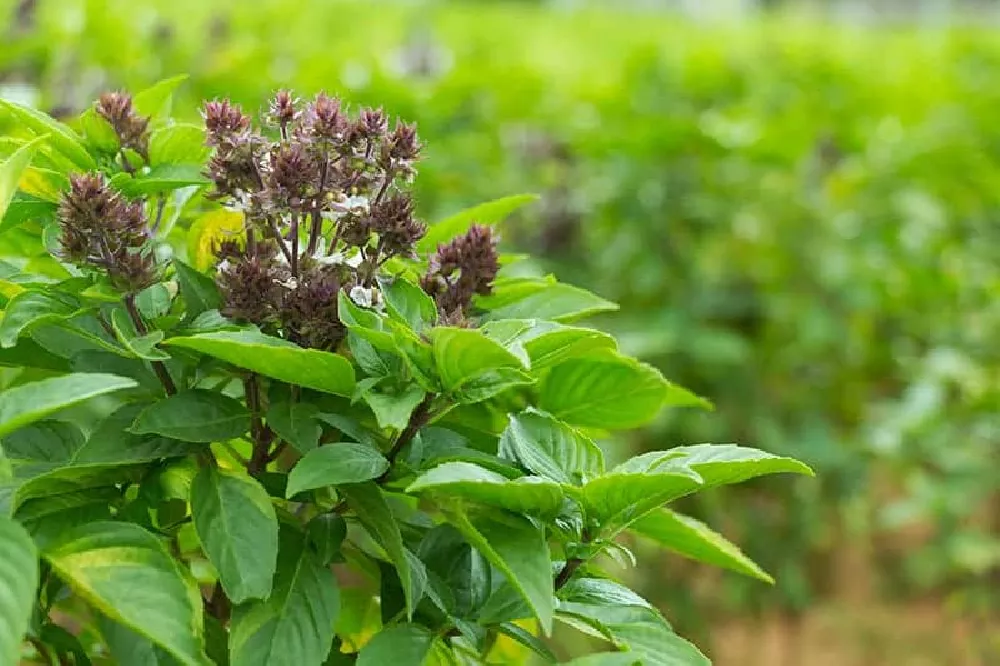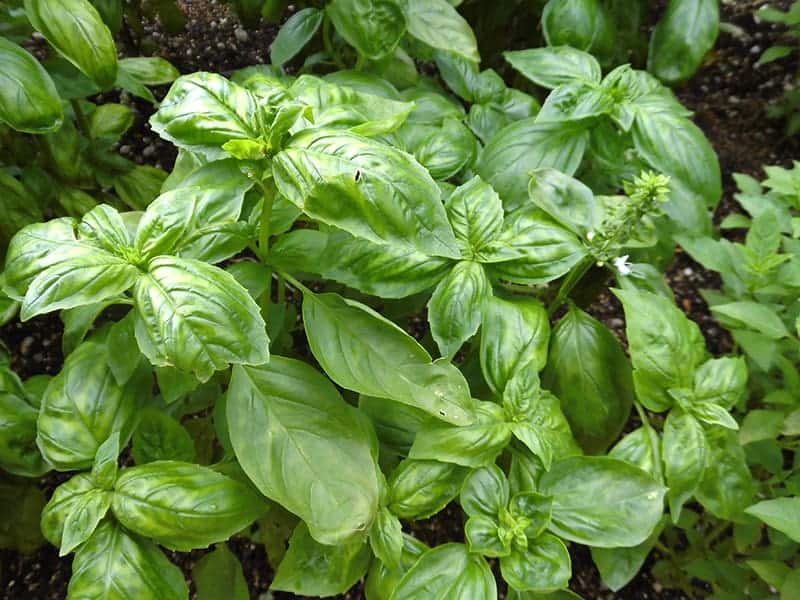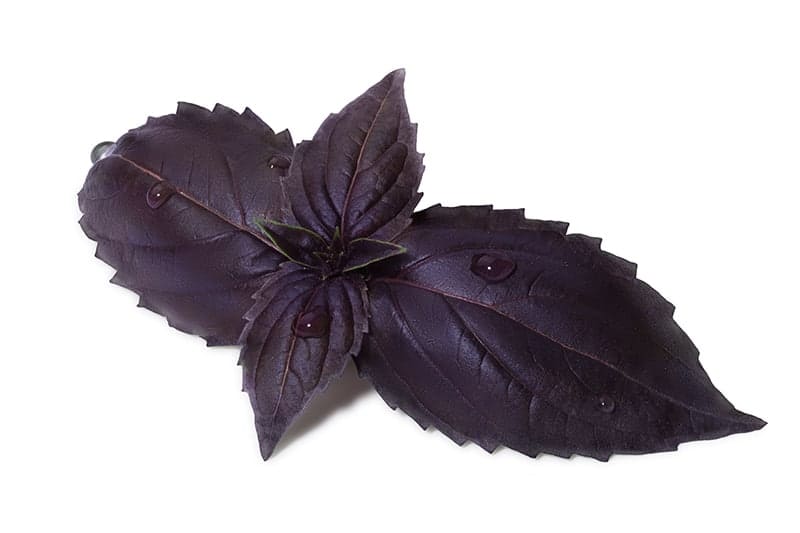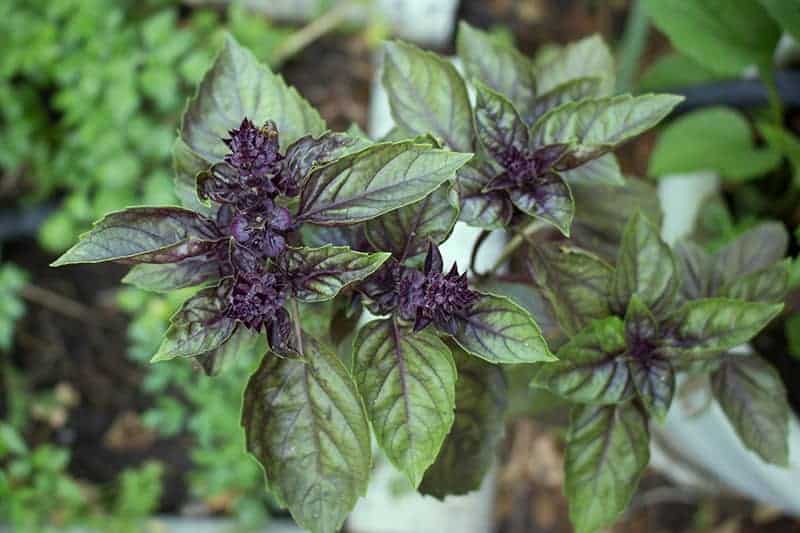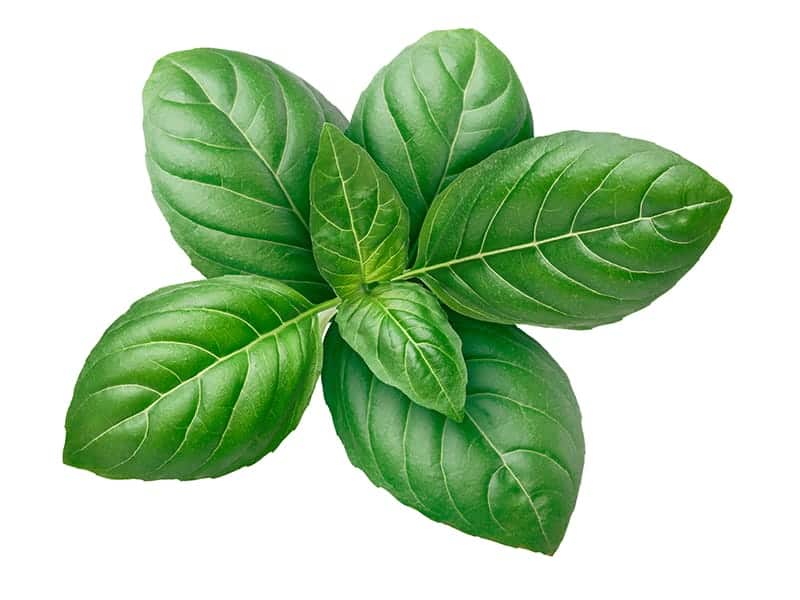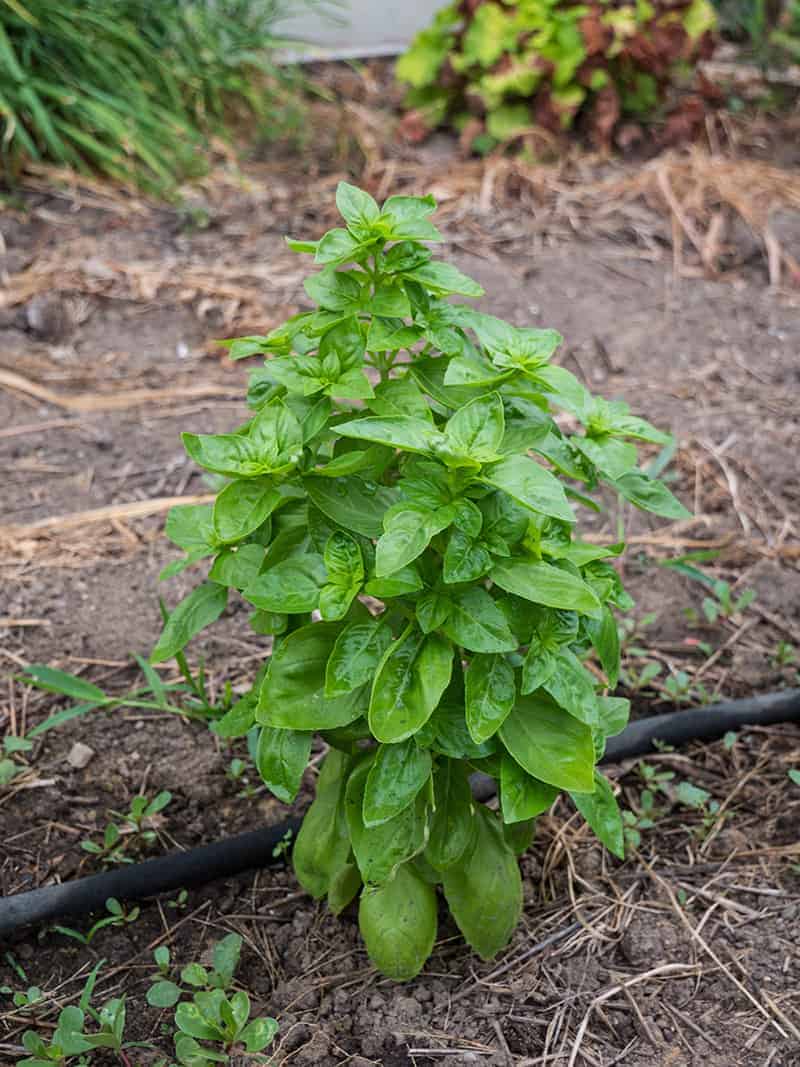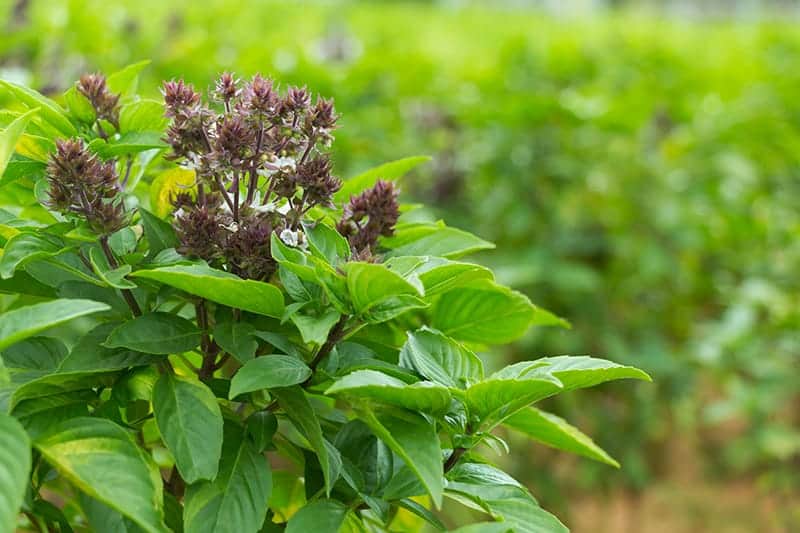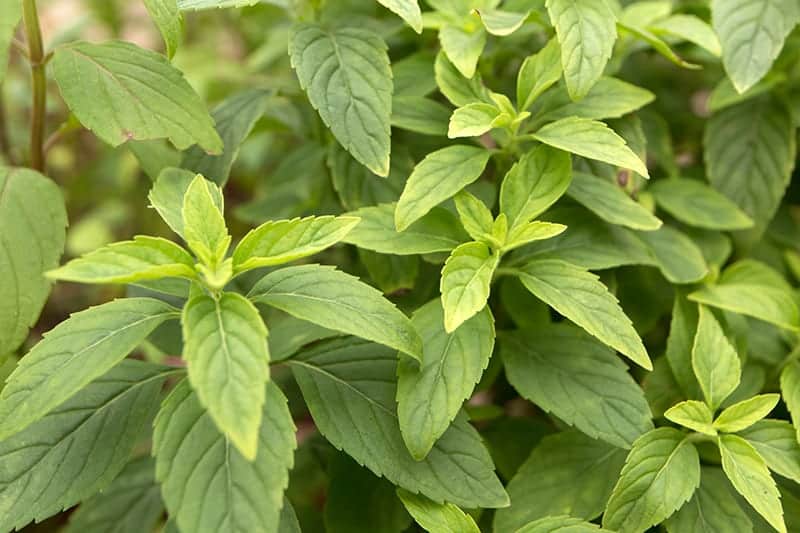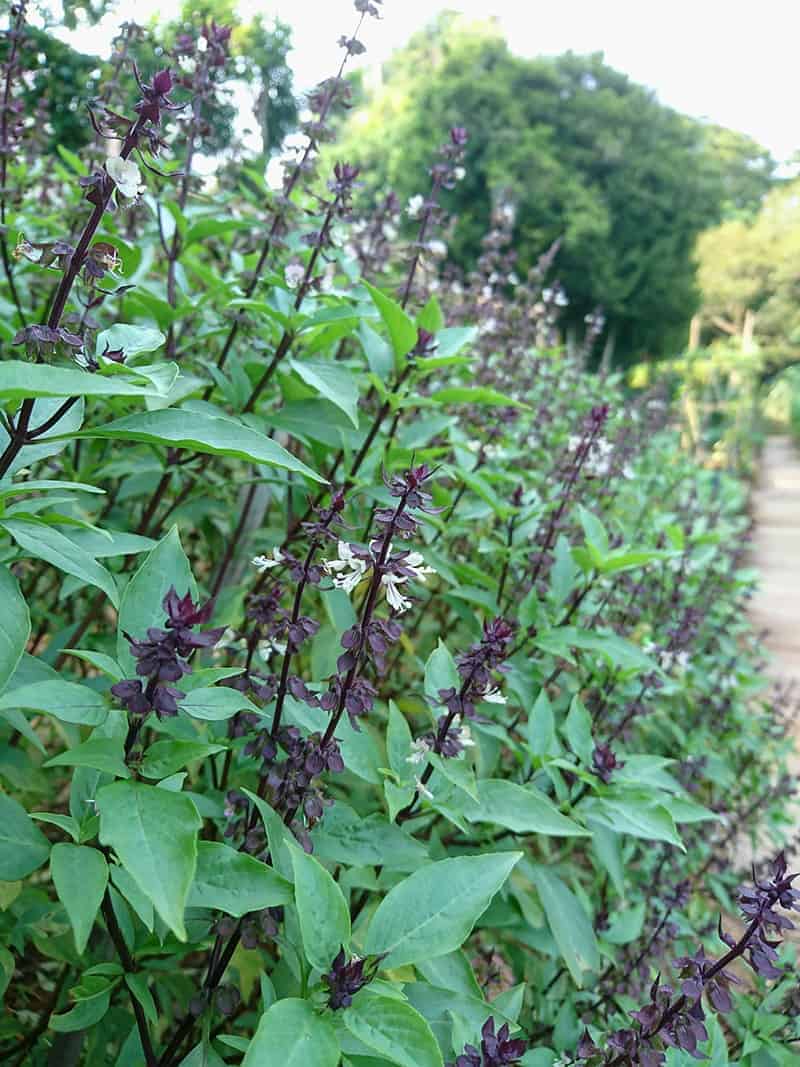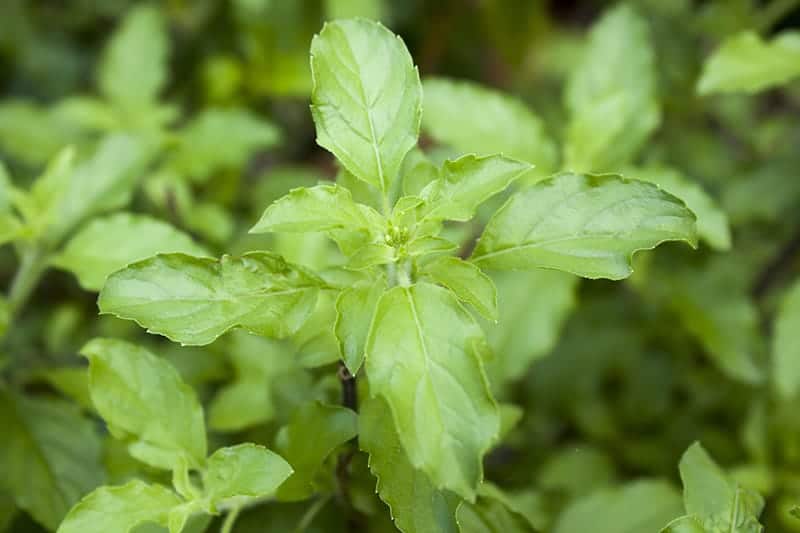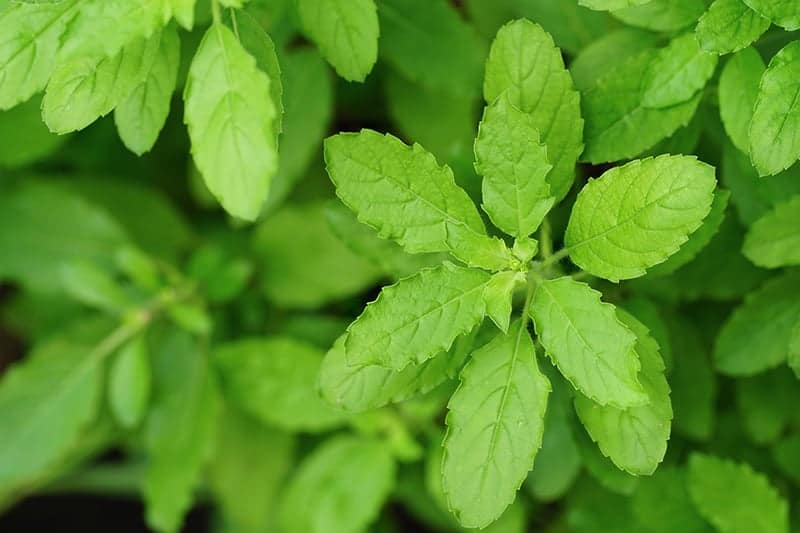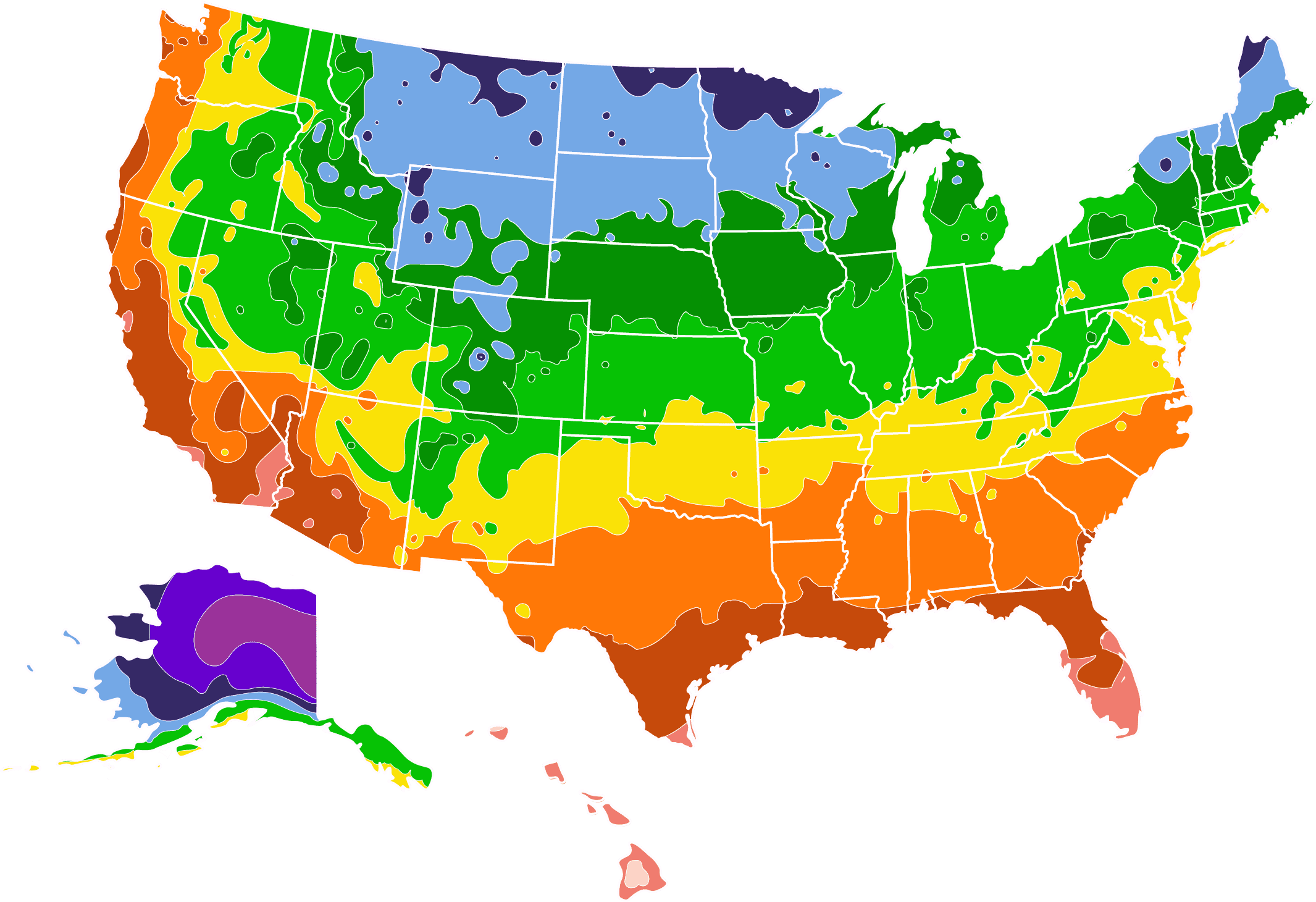Basil Plants for Sale - Buying & Growing Guide
Basil is an aromatic herb that is popularly cultivated for culinary uses. There are many different types of basil available that vary in taste and can add a wide variety of complex flavors to Mediterranean style or Oriental dishes.
Read on to learn more about the variety of basil. We’ll also give details about growing, care & use tips for each of them.
Basil Plant Varieties
1. Sweet Basil
Scientific Name: Ocimum basilicum
Mature Size: Up to 2 feet tall
USDA Hardiness Zone: 2-11
Light: Full sun
Water: Maintain moist soil
Soil: Well-draining
Flower Color: White and pink
This popular culinary herb belongs to the mint family and is native to Asia and Africa. It produces bright green, highly fragrant leaves, which are commonly used in European cooking as well as Asian cooking. Foliage varies in size depending on the size of the plant, with leaves being ovate shaped and sometimes puckered. The plant will produce spikes of bell-shaped flowers in summer, which can be white or pink. It is best to remove these flowers as they appear in order to allow the plant to direct its energy towards growing the edible leaves. Pinching off the flower spikes will encourage more bushy growth of the plant and extend its lifespan.
Sweet basil can be grown as an annual or biennial plant outdoors, growing anywhere with warm summers. In hot climates that are frost-free, it will continue to grow throughout the year. It can also be kept as a container and grown indoors all year round, typically kept as a kitchen herb on a kitchen windowsill. Sweet basil can be harvested for use in cooking at any time. It is wonderful when fresh, but you can also harvest the leaves and dry them out to save them for later use. Sweet basil is commonly used in pestos, tomato sauces, in salads, and on pizzas. It grows best in well-draining soils that are kept continually moist, in a full sun position.
2. Purple Ruffles Basil
Scientific Name: Ocimum basilicum var. Purpurascens ‘Purple Ruffles’
Mature Size: Up to 2 feet tall
USDA Hardiness Zone: 2-11
Light: Full sun
Water: Maintain moist soil
Soil: Well-draining
Flower Color: White and pink
This award-winning cultivar of purple basil is striking both visually and in terms of taste. It produces glossy foliage in a deep shade of purple that is almost bordering on black. The leaves have fringed edges and a ruffled texture. Flowers of this plant arrive in summer, in pink or white, on tall spikes that sit high above the foliage of the basil. The taste of this culinary herb is reminiscent of sweet basil, but with a more licorice type flavor. It is cultivated for its use in cooking and can be used to make brightly colored pesto or as a contrasting garnish on a variety of dishes. This basil is also grown simply for its beauty in the garden and is known for being exceptionally easy to care for, thriving in any well-draining soil with plenty of water and sunlight.
3. Dark Opal Basil
Scientific Name: Ocimum basilicum var. Purpureum ‘Dark Opal’
Mature Size: Up to 2 feet tall
USDA Hardiness Zone: 2-11
Light: Full sun
Water: Maintain moist soil
Soil: Well-draining, fertile
Flower Color: Pink
This is another type of purple basil that is cultivated both for its culinary uses, and its ornamental impact within the garden. It was developed in the 1950s at the University of Connecticut, and by the 1960s was an award-winning plant, receiving the accolade of the All-American Selection award in 1962. It has deep purple foliage that appears black in low light, but unlike ‘Purple Ruffles’, the leaves are flat with fine teeth around the leaf margins. The foliage has a pale, satin-like sheen.
This plant is an annual plant in most situations but can also be grown as a biennial or a container plant both indoors or outdoors. It produces spikes of bright pink flowers in summer, which provide a striking contrast against the purple-black leaves. The leaves of this plant have a distinct licorice taste and a mild licorice scent. They are popularly used in fish dishes, stews, salads, and pastas. This frost-sensitive plant thrives in full sun and well-draining soil and will perform best in a sheltered position.
4. Genovese Basil
Scientific Name: Ocimum basilicum ‘Genovese Gigante’
Mature Size: Up to 2 feet tall
USDA Hardiness Zone: 2-11
Light: Full sun
Water: Maintain moist soil
Soil: Well-draining
Flower Color: Pink and white
This type of sweet basil is very popular for use in Italian cooking, especially pestos, salads, pastas, and tomato sauces. The Italian name of ‘Basilico Genovese’ is protected by the European Union, as a traditional specialty that can only be produced in certain regions of Italy, namely the provinces of Genoa, Imperia, and Savona. This basil looks almost identical to the more common sweet basil, but its leaves are much larger, with a flatter shape.
The taste of Genovese basil is also very similar to sweet basil, but it is more noticeably aromatic and has a slightly stronger flavor. Grow this herb in full sun in well-draining soil and water it deeply in the summer months. It will produce spikes of pink or white flowers, but these should be removed so that the plant is better able to produce flavorsome foliage.
5. Dolce Fresca Basil
Scientific Name: Ocimum basilicum ‘Dolce Fresca’
Mature Size: Up to 2 feet tall
USDA Hardiness Zone: 2-11
Light: Full sun
Water: Maintain moist soil
Soil: Well-draining, fertile
Flower Color: Pink and white
This type of sweet basil, visually, is difficult to differentiate from common sweet basil, but the taste is slightly different. This basil has a flavor that has suggestions of mint and anise. It works well in a variety of Meditteranean dishes, such as stews, salads, and tomato sauces. This is a compact plant that will have a more dense and bushy shape when flower spikes are pinched out as they appear. The leaves can be harvested at any time and used fresh or dry. Grow this plant outside as an annual, or keep it inside in a container for use all year round. It likes fertile soils that drain well and a position of full sun.
6. Thai Basil
Scientific Name: Ocimum basilicum var. thyrsiflorum
Mature Size: Up to 1.5 foot tall
USDA Hardiness Zone: 2-11
Light: Full sun
Water: Maintain moist soil
Soil: Well-draining, fertile
Flower Color: Purple-pink
This variety of basil is native to Southeast Asia and is a staple in Asian cuisine. It has a slightly spicier flavor than common sweet basil, with notes of licorice and anise. It is especially popular in Vietnamese cooking, where it is frequently used to create Thai red or green curries. This basil has small leaves that are light to medium green. The stems of the plant are purple and square, and flower spikes are produced in summer with tiny pink-purple blooms. These spikes should be pinched from the plant, as if they remain, they can make the leaves turn to a bitter flavor.
Thai basil is a tender perennial where it will grow all year round in hot climates, though in most places, this plant is grown as an annual during warm summers. It thrives in well-draining soil and full sun, requiring between six and eight hours of direct sunlight each day.
7. Cinnamon Basil
Scientific Name: Ocimum basilicum ‘Cinnamon’
Mature Size: Up to 3 feet tall
USDA Hardiness Zone: 2-11
Light: Full sun
Water: Maintain moist soil
Soil: Well-draining, fertile
Flower Color: Pink and white
This basil is also known as Mexican Spice basil, which is cultivated for its spicy, cinnamon-like flavor. It is versatile as a culinary herb, being used in sweet baked goods such as pies and pastries, as well as in savory dishes such as pastas, tomato sauces, and salads. Interestingly, this herb is also used to create scented products for the home, such as potpourri.
Visually, Cinnamon basil looks like a cross between basil and mint. Its leaves are more narrow than common sweet basil, with slightly serrated edges and more pointed tips. Foliage is a medium to dark green, with purple stems and veins. Flowers are produced in late summer, blooming in pink or white on spikes. This plant can be grown as a perennial in USDA hardiness zones 9-11, but outside of these zones, it is commonly grown as an annual. Keep this plant sheltered and allow it all-day sun in well-draining, moist soil.
8. Persian Basil
Scientific Name: Ocimum basilicum ‘Persian’
Mature Size: Up to 1 foot tall
USDA Hardiness Zone: 2-11
Light: Full sun
Water: Maintain moist soil
Soil: Well-draining
Flower Color: Purple
This type of sweet basil has a spicy taste that is similar to clove and anise. It is great for adding flavor to soups, stews, and sauces. This plant is not only cultivated for its culinary use but also because it is very ornamental. The leaves are large and flat, with fine and even serrated edges. This plant is late to flower, typically producing spikes towards the end of summer. These spikes are adorned with purple, tubular-shaped, small flowers, which add a pretty aesthetic to the plant, but unfortunately can make the leaves turn bitter-tasting. If you are growing this plant for its culinary uses, then it is advisable to remove flower spikes as soon as they develop.
9. Lemon Basil
Scientific Name: Ocimum citriodorum
Mature Size: Up to 1 foot tall
USDA Hardiness Zone: 2-11
Light: Full sun
Water: Maintain moist soil
Soil: Well-draining
Flower Color: White
This type of basil has a distinct lemon flavor, with a hint of anise. The leaves give off a vibrant citrus scent, and the small white flowers that are produced at the end of summer also have a lemon aroma. This basil is commonly used in Indonesian and Thai cuisine and can be used in noodle or curry dishes to give an oriental flavor to cooking. It is often used raw in salads or added to oils or chutneys to give them a citrus basil flavor. The lemon basil plant produces square stalks from that long and narrow ovate leaves grow. The foliage has smooth edges, and each leaf can measure up to two inches long. It is widely cultivated in Africa and Asia and is thought to be the result of a hybrid between Ocimum basilicum and Ocimum Americanum. It grows well in hot climates in full sun with moist soil.
10. Holy Basil
Scientific Name: Ocimum sanctum / Ocimum tenuiflorum
Mature Size: Up to 2 feet tall
USDA Hardiness Zone: 2-11
Light: Full sun to partial shade
Water: Maintain moist soil
Soil: Well-draining, fertile
Flower Color: White and purple
This basil is native to southern Asia, where it grows as a perennial subshrub. It can be grown all year round only in USDA hardiness zones 10 and 11; otherwise, it can be grown as an annual in summer. This basil is considered sacred in Hinduism, and is used in worship rituals, and planted around Hindu shrines. It is regarded as having healing properties in some cultures and has been used since ancient times to combat stress and repel insects. It is also used to flavor tea or can be added to oriental dishes such as spicy stews or stir-fries. This basil has a peppery taste that adds spicy heat to food.
Visually, this plant is quite interesting to look at, with foliage in shades of green or purple and leaves that can reach up to two inches long. The plant sends out flower spikes held above the foliage, which have tiny flowers in white or purple. The foliage of this plant is heavily aromatic, and it is this scent that is believed to repel insects, and so should be grown near seating areas in gardens where mosquitos or other insects can be a problem. This basil grows best in a position of full sun or partial shade in a moist and well-draining soil.
